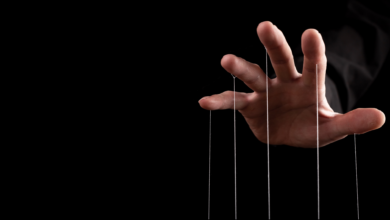10 Clothing-Inspired Small Business Ideas


Fashion is a $3 trillion industry globally, attracting a workforce of hundreds of thousands who are drawn to the creativity, glamour and excitement that it represents. Fashion is everywhere, and social media has made it all the more ubiquitous. For those who are drawn to careers serving the style-minded, there are endless options, from hands-on art and design-driven opportunities to more business-focused disciplines.
Whether a Project Runway binge-fest launched your fashion dreams or you have years of industry experience and are ready to run your own business, the fashion space offers great options for the style-centric entrepreneur, with numerous online courses at the ready to supplement or build on your fashion know-how.
Inclusive clothing line
One of the most important developments in the clothing industry is the rise of inclusive brands that embrace and represent cultural diversity, size diversity and fit diversity. If you are a designer, you can disrupt the fashion norm and create styles that are tailored to meet the specific needs of different and unique body types (as opposed to simply adapting or scaling a pattern up in size, or worse, not carrying the spectrum of sizes that make a brand truly size-inclusive). Everybody wants to be seen, be heard and be a muse in the design process. Perhaps designing adaptive clothing for those with differently abled bodies resonates with you, or learning how those in the queer community face fit challenges motivates you to bring to market clothing that addresses these realities. A good starting point is to find a way to make your concept customizable so all who wish to wear it have real options just right for them.
Clothing rental
The clothing rental market is expected to double in growth between 2019 and 2025, when it is forecasted to reach $7 billion in sales. The explosive growth is a sign of the times, with consumer shopping habits aligning with a greater commitment to being more environmentally responsible. As an entrepreneur in the rental category, you have several ways you can cater to customers seeking short-term access to formal wear or special items. If you have an enviable closet, why not experiment with the potential for success by dabbling in peer-to-peer fashion rental? You can start by posting drool-worthy pics and compelling descriptions of trending or sought-after items on popular platforms like Tulerie or Wardrobe. If you have a background in retail fashion buying and can curate and merchandise looks for everyday power meetings, date nights or special occasions, consider building an online destination or in-store environment where customers can get short-term fresh finds. Fashion rental subscription services such as Nuuly are yet another way to gain entry into the growing market. These rental services involve customizing monthly mini-wardrobes, which get returned and then replenished with a new assortment based on clients’ preferences. In every rental scenario, shipment, returns and clothing maintenance are all important factors that need to be considered.
Fashion buying service
Starting an independent buying service could be a natural progression if you have strong fashion buying expertise and entrepreneurial aspirations. As a fashion buyer, you are the eyes and ears of your clients in the vast fashion marketplace. You will be expected to have the intel to forecast trends, acquire merchandise that meets the aesthetic, quality and budget of your merchant-clients and maintain inventory levels that align with their demand. To start, you may want to choose a specialty niche in an area where you are most knowledgeable, be it footwear, kids’ clothing or athleisure wear. Ideally you will have access to a major wholesale apparel market as well as trade shows and virtual fashion showrooms to tap into for your clients.
Event swag or promotional merch business
Clothing as party favors, parting gifts and promotional vehicles has become very popular in the corporate, event and celebration spaces. From bachelorette parties to bar and bat mitzvahs, family reunions to cheer squads to corporate retreats, there is an audience for logo wear. If you have the creativity to “brand” someone’s special day and then translate it to hoodies, T-shirts, hats, pajama pants, towels and other novelty items, you could build a successful business. You will need a good graphic design program and relationships with reliable suppliers of quality apparel and accessories.
Personal shopping service
For the fashion-obsessed who shop for sport and have developed a reputation among friends as the go-to for style advice, starting a personal shopping service could be a fun and profitable way to channel your good fashion sense. It’s a business of relationships: relationships with clients who rely on your expertise on a regular basis and can recommend you to others, and relationships with stores and sales associates who will treat your clients well, give you the inside scoop on new arrivals and put on hold things they think your clients will like. You will also need a relationship with social media, establishing an account that shows off your style savvy and happy well-styled customers, as well as following different platforms and accounts to mine trends and fashion finds. The key is to create a special, elevated experience tailored to the needs, tastes, fit preferences, pain points and schedules of your clients who are paying a premium for your personalized services.
One of the most important developments in the clothing industry is the rise of inclusive brands that embrace and represent cultural diversity, size diversity and fit diversity.
Print and graphic design
Enterprising graphic designers with a love for fashion can build a successful freelance business designing for clothing and accessories brands. Whether your specialty is bold, attention-grabbing typography or intricate pattern-making, you can appeal to the needs of clients looking for designers who can bring their vision or brand identity to life in fresh and exciting ways. Fundamental to any successful graphic design business is top-notch design software. Once you have developed a collection of samples that showcase the breadth and quality of your work, you will want to highlight them with a digital portfolio and social media platforms, two valuable marketing tools for any graphic artist.
Online fashion boutique
Fueled by the COVID-19 pandemic, e-commerce has experienced explosive growth over the past couple of years. By 2025, it is expected that consumers will continue to embrace online shopping to the tune of $7.4 trillion. Fashion is among the e-commerce categories that consumers are getting more comfortable with as e-tailers make the shopping experience more dynamic and personalized with the help of customer service via live chat and AI-enabled chatbots. Starting an online boutique could be a great small business for someone who loves specialty fashion but doesn’t have the resources to open a costly physical location. Choosing the right virtual shopping platform is key, second only to establishing your business as a destination for something unique and special and then leveraging the most effective digital marketing tools like wow-factor photography and influencer marketing.
Clothing alterations
There is a whole new generation of “sewists,” crafters who are turning to sewing as a creative outlet or means of self-expression, ignited by a surge in YouTube and TikTok tutorials as well as podcasts dedicated to the craft. If you are among the new crop of crafters drawn to the allure of a needle and thread or sewing machine, you may want to consider working your way to developing expert-level skills and starting a clothing alterations and tailoring business. Rarely does an outfit fit right off of the rack, and shoppers with someplace important to go or who just need some tweaks to everyday wear are often willing to invest in quality alterations, be it fixing a hem, repairing a zipper or switching out buttons. An alterations business is a much-needed specialized service in most neighborhoods, yet those who know their way around a seam or dart are often in short supply. You will need to invest in a good sewing machine, hone your stitching techniques and learn the distinct properties of working with different fabrics. Offering free alterations to friends and family is a great way to practice and develop your skills and building word-of-mouth through local clothing boutiques and social media groups can help get your client base going.
T-shirt printing
T-shirts are a fashion staple, from the classic plain white to the uber-popular graphic tees. They are America’s go-to, as they go with just about everything. Ever-popular are custom-printed tees, with the industry expected to grow from $3.96 billion in 2021 to $7.57 billion in 2028, primarily through the proliferation of print-on-demand businesses. Nearly every pop culture reference finds its way on to a tee, and if you can get your interpretation of them to market with great speed, a cool factor and quality, you can become a T-shirtpreneur. T-shirt printing is a business model with minimal investment. Having graphic design skills is key for maximum uniqueness and control, and there are different types of software like Adobe Illustrator that offer T-shirt–specific templates. No artistic skills? No problem. There are many resources for buying pre-made vector art packages that can be manipulated and used for producing T-shirts. Once you have a good selection of options to choose from, you can merchandise your tees on your own e-commerce site and have orders and shipping set up through one of the many T-shirt fulfillment businesses that take care of all back-end processes, from transactions to printing to packaging. If you want to oversee quality control and customer service, you can inventory the merchandise and handle the fulfillment yourself, requiring significantly greater overhead.
Resale or thrift shop
Fueled by a seismic consumer shift toward a more ethical, sustainable approach to fashion, the resale industry is having a major moment. “Disposable,” “single owner” and “throwaway” are being replaced by “reusable,” “multiple owners” and “resell.” The more evidence we see about how our purchasing behaviors impact the planet, the more shoppers are rethinking their purchases and pivoting to more responsible means of getting their fashion fix. Doing good while looking good has been a big driver of resale-related businesses, and if you’re someone who can spot a great flea market or estate sale find, you can turn a favorite pastime into a profit. You can choose the brick-and-mortar path or go the e-commerce route. In either case, you will need an inventory of well-maintained, good quality items, merchandised to have maximum appeal. Before taking the plunge into investing in a storefront and everything that comes with it, you may want to test the waters with a pop-up shop that allows you to gauge the interest in and potential for your business model and product mix.
CO—
aims to bring you inspiration from leading respected experts.
However, before making any business decision, you should consult a
professional who can advise you based on your individual situation.
Follow us on Instagram for
more expert tips & business owners’ stories.
CO—is committed to helping you start, run and grow your small business. Learn more about the benefits of small business membership in the U.S. Chamber of Commerce, here.
Published





